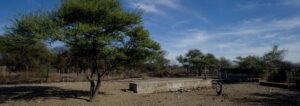Diamonds are a girl’s best friend. They have also been a very good friend to Botswana’s economy. The diamond industry in Botswana is responsible for most of the job opportunities in the country’s private sector. It earns approximately 80% of Botswana’s foreign currency and it contributes half of the Botswana government’s revenue.
Diamonds also constitute a third of Botswana’s GDP. The legacy of the diamond industry can be seen in Botswana’s economic growth and stability since the discovery of the first diamonds in 1966. The industry employs almost 8 000 people, either directly in the mining sector or indirectly in the processing of diamonds. However, the diamond industry is under strain. According to DeBeers Group, the international demand for diamonds is declining. Botswana’s neighbour, South Africa, is also feeling the pressure as one of the world’s largest exporters of diamonds.
The Botswana Government realised the potential threat of being overdependent on a fluctuating industry.
There are plans to develop the agricultural sector of Botswana to be able to supplement the economy in case the diamond industry cannot cope with the external macro-economic pressures. At the moment, the agricultural sector of Botswana is not a viable alternative for the diamond industry as it only contributes 2% to the GDP.
The agricultural sector mainly relies on beef production in this arid country. Beef and goat farming constitute the majority of agricultural activities in Botswana, with some crop farmers in the northern regions closer to the Okavango delta.

Diamonds.
The question then remains how Botswana intends to expand agriculture to become one if its main economic pillars. The answer lies in the number of people that have knowledge and experience in the agricultural sector. Many citizens are practicing subsistence agriculture. The government hopes to convert the current common practice of subsistence farming into commercial farming that can make a meaningful contribution to the national economy.
The government intends to assemble an incentive package to encourage farmers to start new ventures. The aim is to boost the country’s food production so that the quantity of food being imported can be reduced. During the 2019 National Budget Speech, the Minister of Finance allocated a budget of P1,34 billion to the Ministry of Agricultural Development and Food Security.
Viewed in proportion to the rest of the budget, this is only 2,8% of Botswana’s annual National Budget. The government should consider investing more in agriculture if they want better returns from the sector.
The Government of Botswana reported a growth of 3,6% during the years 2012 to 2017. It was estimated that the sector’s contribution to the GDP will only grow with 0,7% annually until 2023. The reason for the nominal growth lies in the challenges that the Government of Botswana had identified.
Diamonds have been the cornerstone of Botswana’s economy for decades, but recent trends have forced the country to look to alternatives to drive the economy. Photo: DeBeersgroup.com.
They are:
- A lack of infrastructure in Botswana. While the major centres are connected by roads and railways, the rural regions, where most of the agricultural activities take place, do not have adequate infrastructure to support the transport needed for farmers to get their produce to major markets. Furthermore, water, electricity and telecommunications are not readily available.
- The outbreak of pests and diseases have played a significant role in the poor performance of the agricultural sector. Between 2009 and 2015 the country has been plagued with outbreaks of foot-and-mouth disease. Several species of weeds have also been identified that caused crop failures or lower yields. These challenges can be overcome through sound management practices.
- Climate change is also identified in the National Development Plan (11) as having a detrimental effect on the agricultural sector. Botswana is an arid country with vast desert and semi-desert areas. The persisting drought that has been raging throughout Southern Africa has also affected Botswana.
- The under-utilisation of agricultural
- land is a major cause for concern. As stated, many of the inhabitants of Botswana are already practicing subsistence agriculture. If these farmers can be motivated and assisted to expand their operations and farm on a commercial scale, the agricultural sector and the country could benefit greatly.
- The combination of all these factors has contributed to a very low production rate in the agricultural sector of Botswana. The country has the potential to produce a lot more, but it needs to ensure enough capital investment and training opportunities in order to achieve improved results.
The answer seems to lie in four focus areas that the government of Botswana can invest in to ensure substantial growth in the agricultural sector. The first is investment in the development of infrastructure. If more farmers have access to local and major markets it will not only encourage larger scale operations but will also aid other sectors of the economy. Boosting infrastructure will entail the building of roads and power stations that will create more jobs. The whole economy will benefit from this; not only the agricultural sector.

Drought, subsistence farming, lack of infrastructure as well as pests and diseases have been identified as growth barriers for the agricultural sector of Botswana. (Image source: Botswanafarms.com)
Secondly, the challenges of drought and climate change can largely be met by the development of irrigation technology. Botswana has rich water sources in some areas of the country, and these can be used as irrigation hubs where crop farming and horticulture can be the main focus of economic activity. Once the issues of a sustainable water supply and adequate infrastructure have been addressed, the farmers can be motivated and trained to expand their operations from subsistence to commercial agriculture. This in turn will lead to more effective land use and higher levels of agricultural production.
The government of Botswana deserves credit for foreseeing the problem of being overly dependent on the diamond industry. They also deserve credit for realising that agriculture has the potential to become a major contributor to the economy. The challenges that have been identified is another step in the right direction. Whether the government has the political will and resources to adequately address these challenges is something that remains to be seen.









